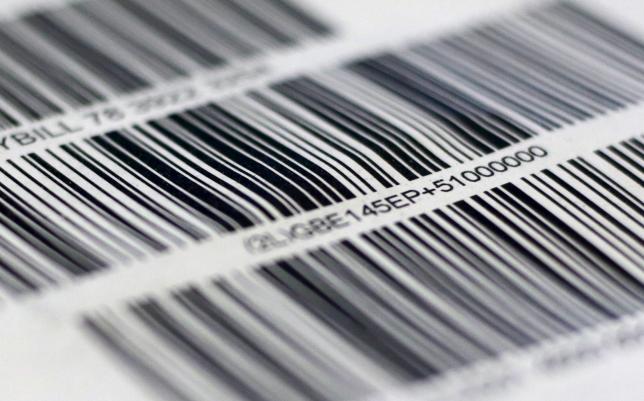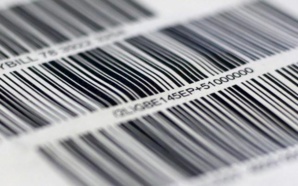The simple barcode data available in the market that appears on every product packaging may disappear soon from the market as the customers demand for “for more information about the products” they purchase. Interestingly, on an average each barcode tags get “scanned five billion times” on a daily basis.
The barcodes first made its market entry on “Wrigley's Juicy Fruit chewing gum” packaging in the year of 1974, since then it has come a long way by revolutionizing “the retail world”. Moreover, it allows logistic streamlining besides speeding up the process of collecting cash at the counter.
However, at present the customers and retailers both look for “far greater transparency about products”. The information is useful to maintain the stock register for the shop keeper, whereby the barcode system has been helpful in fighting fakes and in product recalls. However, the basic the data offered in the present tags seem “just not up to the job”. While the change of barcode design will bring also change the packaging whereby kick starting a costly affair for the brands and retailers as they need to acquire new scanner and barcode system, they will also be benefitted from the same change as “more data” will enable them manage the sale flow better. The consultant of Capgemini, Kees Jacobs, who works in association with “world's top retailers and food manufacturers” in order to arrive at a mutual global standard for barcode “labels and product data”, informs:
"The barcode did a great job, but it is now time for succession. The current barcode is not sufficient to be the carrier of much more granular information that is needed”.
The attempts of developing intricate barcode number will take into consideration of including ingredients information, “allergens or country of origin”, the date of expiry, and batch number, while these may be available online for the consumers to access the info through a smartphone app.
The non-profit organization of GS1 is tasked with generating the unique barcode numbers in the present system. Moreover, it has also developed a new system which is doubly layered with data and is termed as the "data bar" capable of containing surplus data such as
“...expiry date, quantity, batch or lot number”.
Consequently, Metro, a German retailer, has launched a smartphone app called “PRO Trace” which allows the customers to trace the details of a particular product even sitting at home. The concept of new barcode designs has opened up a whole new vistas of opportunity in the retail market whereby the project manager of Corporate responsibility at Metro, Lena vom Stein remarks:
"We are the only ones in Germany that can do this for fresh fish. It's about trust. Our customers challenge us to offer sustainable and safe products.”
The next big hurdle in this endeavour is to process “a wealth of data” whereby making it accessible to the consumers. While, some sectors still show resistance in sharing data which they claim to be commercially sensitive, there is a “will” towards it. GS1 is even working to assign “identifier numbers” to individual farms in order to process more “sustainability data”. In Bowden of GS1’s words:
"The will is there. It has to happen. Like any major change, big companies have to have time to think through the implications”.
"I am convinced we will have a day where pretty much all information about all products will be available to all consumers”.
Source(s): Reuters.com
The barcodes first made its market entry on “Wrigley's Juicy Fruit chewing gum” packaging in the year of 1974, since then it has come a long way by revolutionizing “the retail world”. Moreover, it allows logistic streamlining besides speeding up the process of collecting cash at the counter.
However, at present the customers and retailers both look for “far greater transparency about products”. The information is useful to maintain the stock register for the shop keeper, whereby the barcode system has been helpful in fighting fakes and in product recalls. However, the basic the data offered in the present tags seem “just not up to the job”. While the change of barcode design will bring also change the packaging whereby kick starting a costly affair for the brands and retailers as they need to acquire new scanner and barcode system, they will also be benefitted from the same change as “more data” will enable them manage the sale flow better. The consultant of Capgemini, Kees Jacobs, who works in association with “world's top retailers and food manufacturers” in order to arrive at a mutual global standard for barcode “labels and product data”, informs:
"The barcode did a great job, but it is now time for succession. The current barcode is not sufficient to be the carrier of much more granular information that is needed”.
The attempts of developing intricate barcode number will take into consideration of including ingredients information, “allergens or country of origin”, the date of expiry, and batch number, while these may be available online for the consumers to access the info through a smartphone app.
The non-profit organization of GS1 is tasked with generating the unique barcode numbers in the present system. Moreover, it has also developed a new system which is doubly layered with data and is termed as the "data bar" capable of containing surplus data such as
“...expiry date, quantity, batch or lot number”.
Consequently, Metro, a German retailer, has launched a smartphone app called “PRO Trace” which allows the customers to trace the details of a particular product even sitting at home. The concept of new barcode designs has opened up a whole new vistas of opportunity in the retail market whereby the project manager of Corporate responsibility at Metro, Lena vom Stein remarks:
"We are the only ones in Germany that can do this for fresh fish. It's about trust. Our customers challenge us to offer sustainable and safe products.”
The next big hurdle in this endeavour is to process “a wealth of data” whereby making it accessible to the consumers. While, some sectors still show resistance in sharing data which they claim to be commercially sensitive, there is a “will” towards it. GS1 is even working to assign “identifier numbers” to individual farms in order to process more “sustainability data”. In Bowden of GS1’s words:
"The will is there. It has to happen. Like any major change, big companies have to have time to think through the implications”.
"I am convinced we will have a day where pretty much all information about all products will be available to all consumers”.
Source(s): Reuters.com






